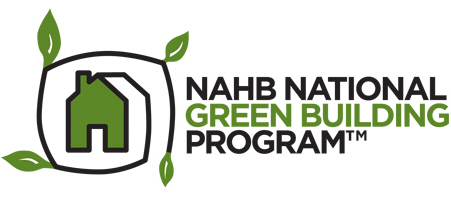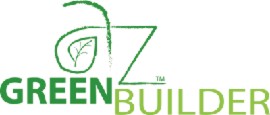Green Sheet 5/4/09
 |
|
WHAT SHADE OF GREEN ARE YOU?
|
As I advocate the advantages of “greening” existing houses with clients, I promote a process of “baby steps” in going green, or “shades of green”, if you will. The fact is no matter how small of a project we take on to green our houses, there is a benefit to us and our environment. I have listed ten areas you can look at to green your house, in varying shades of green (light to dark).
-
CFL’s and Dimmers.
Replace those incandescent light bulbs with Compact Fluorescent lamps, or CFLs. CFL’s can save 75% on energy compared to incandescent bulbs and will last up to 15 times longer. CFL’s give off less heat, a benefit to those summer electric bills. Don’t forget to recycle CFL’s. For areas of the house that you cherish incandescent lighting, go with a dimmer switch. This easy, inexpensive installation can save you 40% on the energy output of your lighting by dimming your lights 50%; not to mention, you can control your lighting!
-
Low or No VOC Paints, Stains, Sealers or Adhesives.
VOC’s, or Volatile Organic Compounds are found in all paints and adhesives and give off gases through their life and can compromise indoor air quality. Many manufacturers now include Low or No VOC products that will not “off-gas” during their life.
-
Carpets and Rugs Utilizing Post-Consumer Content.
When replacing your carpets, look for products with recycled content. Hard to tell the difference, and you are diverting a lot content from the landfills at the same time. Use glues free of Urea Formaldehyde as well.
-
Wood Products of Rapidly-Renewable Origin (Lyptus, Bamboo, Cork) and of Managed Forests (FSC or SFI Designation).
When replacing cabinets, look into Lyptus products made from Eucalyptus trees. Managed Eucalyptus forests can renew in 20 years, whereas more recognizable woods such as maple renew in 40 years. You probably have already heard about the green benefits of bamboo and cork, which have become increasingly popular flooring surfaces. FSC (Forest Stewardship Council) and SFI (Sustainable Forest Industry) promote and maintain controlled forests that exist to produce wood products for consumers. These managed forests eliminate the need for widespread forest destruction which has been going on for decades. Buy wood products from these two sources and you are helping control the use of our forests.
-
Satellite-Based Irrigation System w/ Rain Sensor.
You can add intelligence to your irrigation system by replacing your broken controller with a satellite-based system. The controller checks in with the weather service nightly to confirm the next day’s weather to adjust irrigation patterns accordingly. For an added measure of control, add a rain sensor to eliminate irrigation in the case of an unexpected rain storm. You may ask, why this in Arizona? Think of all the water we would save if our sprinklers went off even twenty times less in a year.
-
Low Flow Plumbing Fixtures.
Getting ready to replace toilets, faucets or shower heads? Go low flow! Yes, we already have Low Flow fixtures based on the 1992 Energy Policy Act. However, newer products, including sink aerators can give use the feeling of the same water flow we have now, but with utilizing less water. Low flow showerheads are one of the most important fixtures to utilize because they are used frequently and expend electricity to heat water. For toilets, the standard usage is 1.6 gallons per flush (gpf). Newer High Efficiency Toilets (HET) can further reduce usage down as low as 1.1 gpf. Most Dual Flush toilets use either .8 gfp or 1.6 gpf depending on need. Make sure your new product has the Water Sense label prior to purchase, which ensures the product conforms to EPA standards.
-
Energy Star Rated Appliances.
When replacing any home appliance, look for the Energy Star label. This assures products meet the requirements of the EPA Energy Star program, and use at least 13% less energy than federal standards. Front loading washers also use 30% less water and 40% less energy than their traditional top loading counterparts.
-
High Seer A/C System with High Performance Filtration.
If replacing your A/C unit don’t underestimate the value of upgrading your HVAC system. Look into a higher SEER value on the unit, which will be more energy efficient and cost-effective to operate. Units that are 14-16 SEER are becoming more commonplace and will contribute to a lower energy bill. Utilizing a higher efficiency filtration system will allow the unit to run more efficiently while removing a greater percentage of pollutants from inside your house. Having your ducts checked for leakage is a good idea, too.
-
Spray Foam Insulation in Attic.
Normally we do not equate the greening of our houses with replacing insulation. We think of insulation as something always there and never “breaks down” unlike our appliances. Truth be told, the dirty, sprayed insulation (or batt insulation) in our attics settle with age and lose their insulating qualities. Furthermore, the pollutants from this insulation filter down into our interior air through every crack imaginable, especially our lighting. To improve a home’s energy efficiency, have soft-cell foam insulation (such as Icynene) sprayed in the underside of your roof sheathing. Insulation at the top of your attic will better fight the heat transfer in our summers. Furthermore, this product will not allow for air infiltration of any kind into the attic. Removal of the old insulation will help to improve indoor air quality as well.
Although you are now in effect conditioning your attic, the furnaces will work more efficiently in a cooler environment and the ducts will be much cooler when distributing air. Imagine an 85 degree attic in July versus 140 degrees! It may be beneficial to include an HVAC inspection with this procedure to see if other benefits can be attained from a mechanical standpoint.
-
Vinyl or Wood Clad Low E Windows.
Most of us may never get to this point, but upgrading windows can have a substantial effect on our energy bills. Low E glass reduces the transfer of heat through glass. Many newer homes have Low E glass included as standard. Unfortunately, aluminum frame windows are excellent conductors of heat, thus this is a major energy waster in the summers. Windows with vinyl frames, or wood framed windows clad with composite materials offer efficient solutions to aluminum windows, of course with a cost.
|
|
I hope this prescriptive guide offers some ideas as to what you can do to make your home greener. Start simple, and find your shade of green! For more information contact Patrick McGlone with Veranda Design Group 480-620-4270, or pmcglone@verandadesignaz.com.
|
|
Patrick McGlone is a Certified Green Professional through the National Association of Homebuilders.
|
|




